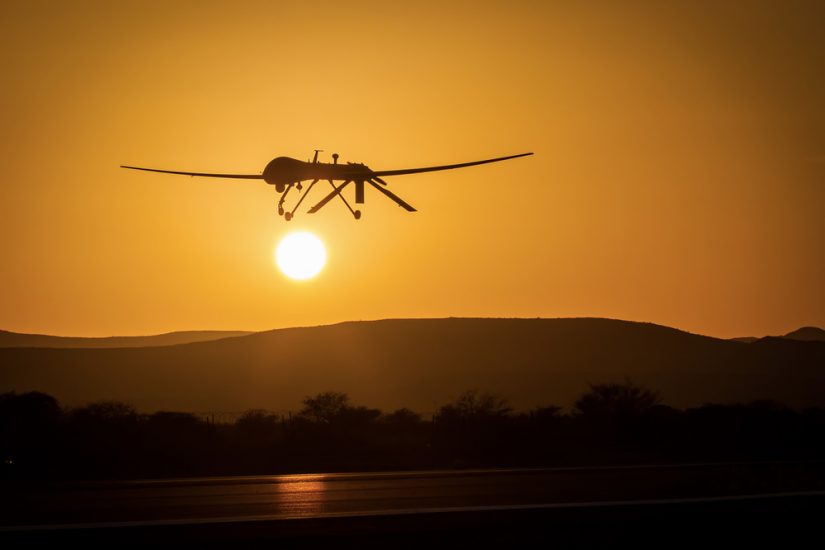The SESAR JU reports its ERICA programme is currently testing the interoperability of remotely piloted aircraft (RPAS) equipped with the detect and avoid (DAA) system to safely operate in airspace used by other categories of aircraft.
“We are also testing the proposed adjusted ATM procedures in simulated and real environments where RPAS can fly in unsegregated airspace,” according to Ermanno Girardelli from Leonardo, coordinator of ERICA, in a recent SESAR JU announcement.
The project, which has received funding from the SESAR Joint Undertaking under the European Union’s Horizon 2020 research and innovation programme under grant agreement No 874474, aims to identify the minimal changes needed to existing systems and procedures in order to enable RPAS integration in the current air traffic for controlled airspace classes A-C under IFR (instrument flight rules), according to the SESAR JU text. It is also looking at the introduction of on-board DAA systems to allow aircraft to react to unforeseen situations almost instantaneously.
The project is validating a DAA solution building on the results of previous initiatives, in which the DAA systems ACAS-Xu and “European Detect And Avoidance System” (EUDAAS) were defined and developed, while integrating other SESAR research work conclusions on collision avoidance, exploiting the lessons learned of air-ground industries, air navigation service providers, network manager and academic-research community.
“The project is carrying out its research in two parallel steps, covering two different phases,” according to Ermanno Girardelli. “The first phase is accommodating the demand for RPAS in the short-to-medium term, establishing harmonised procedures across low-to-medium density and low-to-medium complexity European airspace; this accommodation phase builds on current technologies and procedures. The second phase addresses the full integration of civil and military RPAS, in the longer term, enabling their deployment in a cooperative environment in full integration with the manned aviation; this integration phase will require new technologies and an evolution in the wider ATM system.”
“Regarding the work on DAA, the results of the project will help to define requirements for, and assess the safety performance and operational acceptability of both the ACAS-Xu and the EUDAAS systems. We also expect that our work will provide a sound basis for designing the procedures and regulations together with technologies and functions necessary for RPAS integration. Given the high level of acceptance by all stakeholders involved, we believe that this will pave the way to European-wide implementation.”
| ERICA’s main objectives
According to a fact sheet on the project there are three objectives to the research: • DAA system – For RPAS to be allowed into the airspace, the Detect And avoid (DAA) systems have two functions: Remain Well Clear (RWC) and Collision Avoid (CA). For Class A-C airspace, the RWC function should provide situational awareness to prompt exchanges of tra‑c information with ATC, and support requests for revised clearances. If separation assurance fails, CA should be available to reliably prevent collisions. • Accommodation – This SESAR solution aims at accommodating IFR RPAS, in the short to medium term, during their transit phase through non-segregated controlled class A-C airspace by establishing harmonized procedures across low/medium density and low/medium complexity European airspace. These procedures target reduced planning and approval time and improved access of low numbers of IFR RPAS in this airspace. Resulting benefits are to the initial fixed wing MALE RPAS demand which will benefit from routine access procedures to transit and operate in this airspace as General Air Tra‑c (GAT) with limited restrictions while ensuring airspace equity to all airspace users. Their departure/arrival remains from/to dedicated airfields or dedicated mission. • Integration – This SESAR solution aims at enabling IFR RPAS to operate alongside manned aircraft in the controlled A to C airspaces completely transparently, with no mitigations because they are unmanned. Long term operational concept will be developed in order to allow RPAS to file a flight plan, obey ATC instructions, follow clearances and deal with emergencies in a manner that is safe and fully understandable to ATC, with no additional adverse eect on the ATM system to handle IFR RPAS in this cooperative environment. |
For more information
https://www.sesarju.eu/sites/default/files/documents/projects/PJ13%20Erica%20leaflet.pdf
(Image: Shutterstock)




